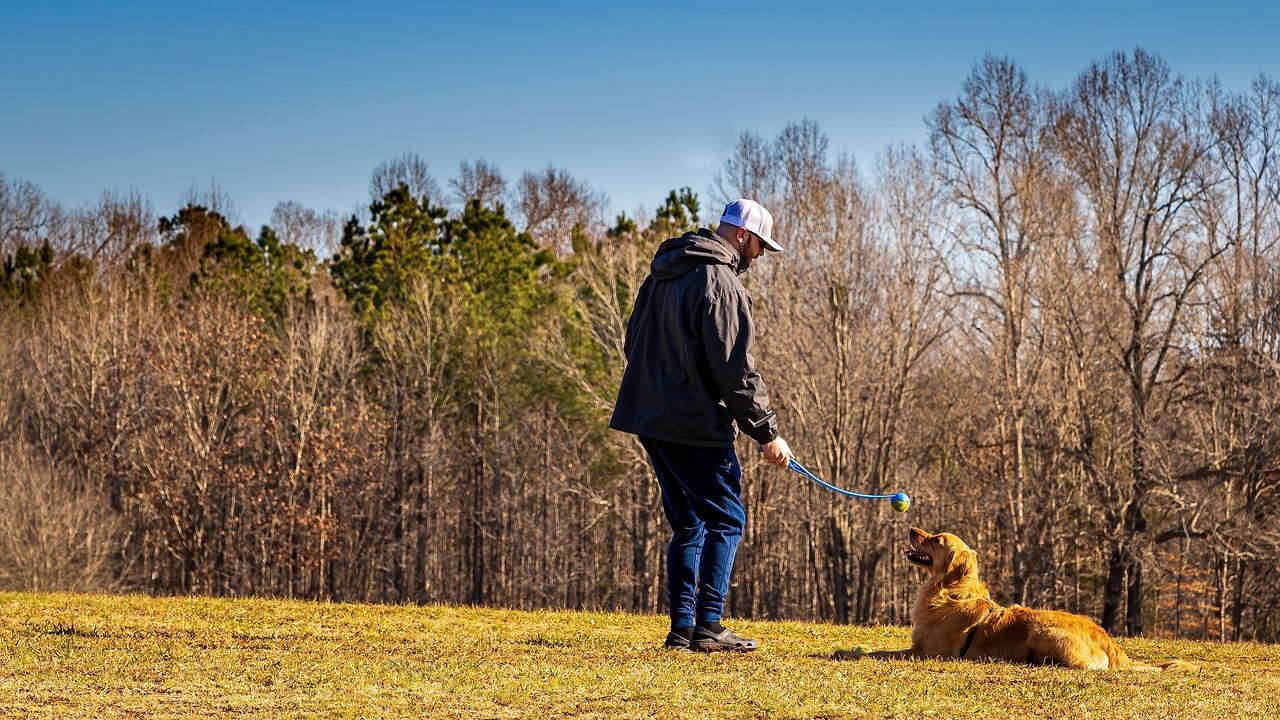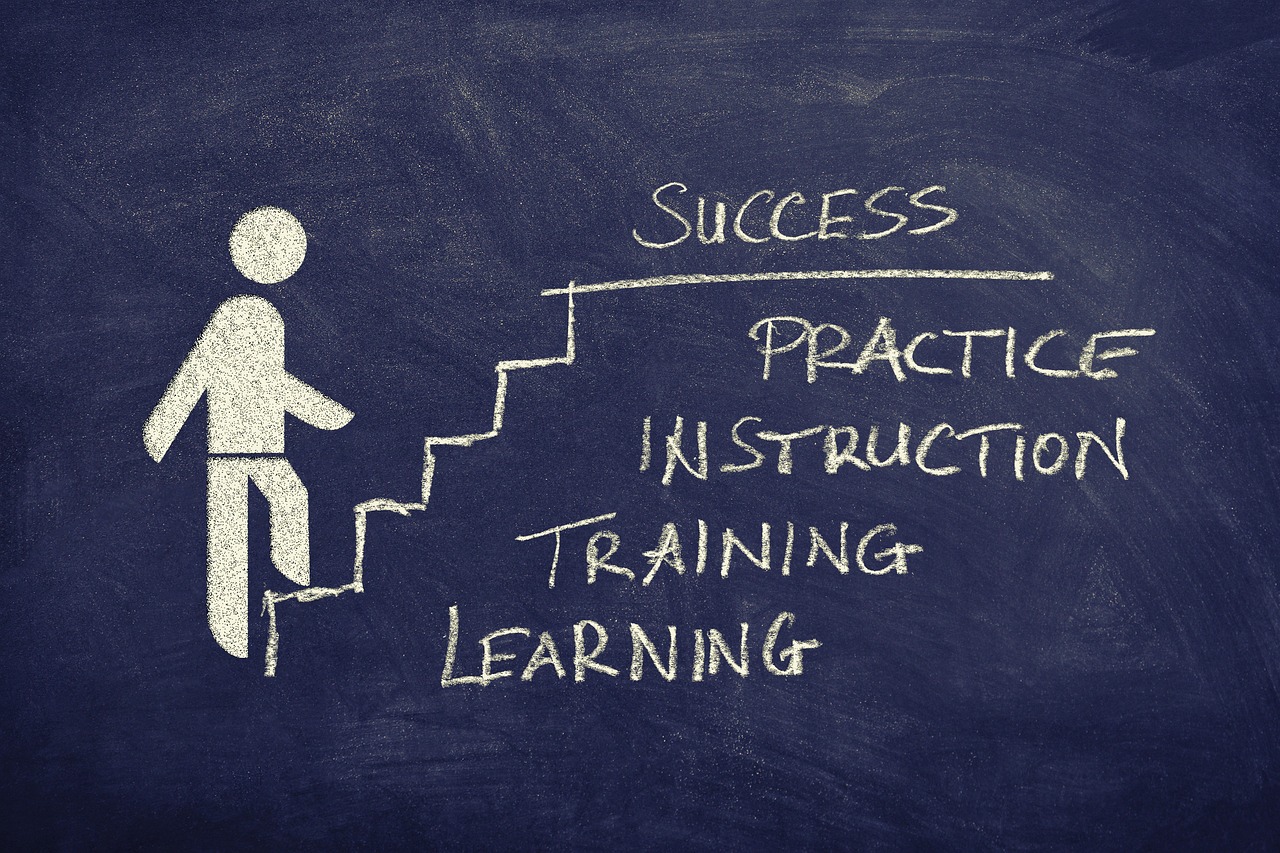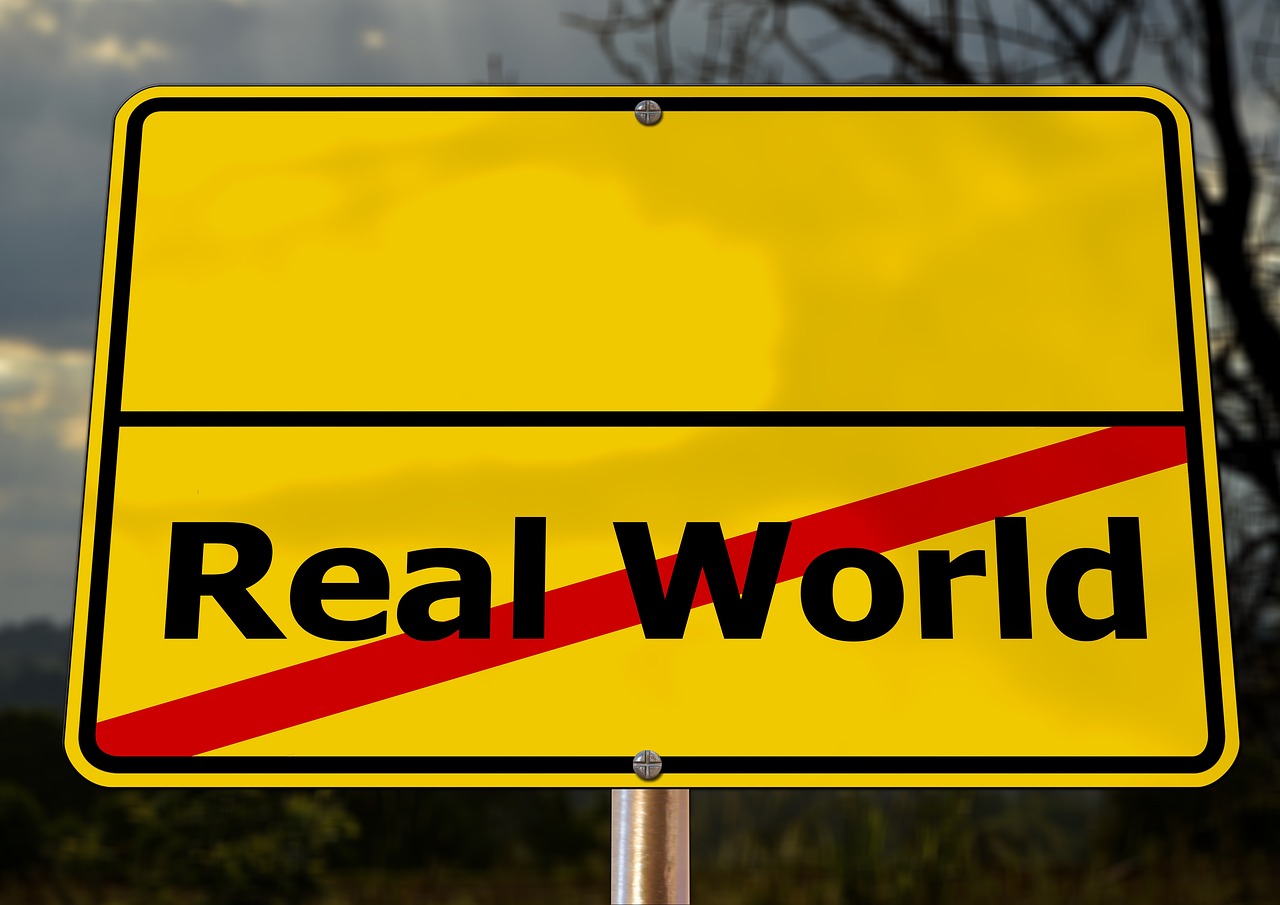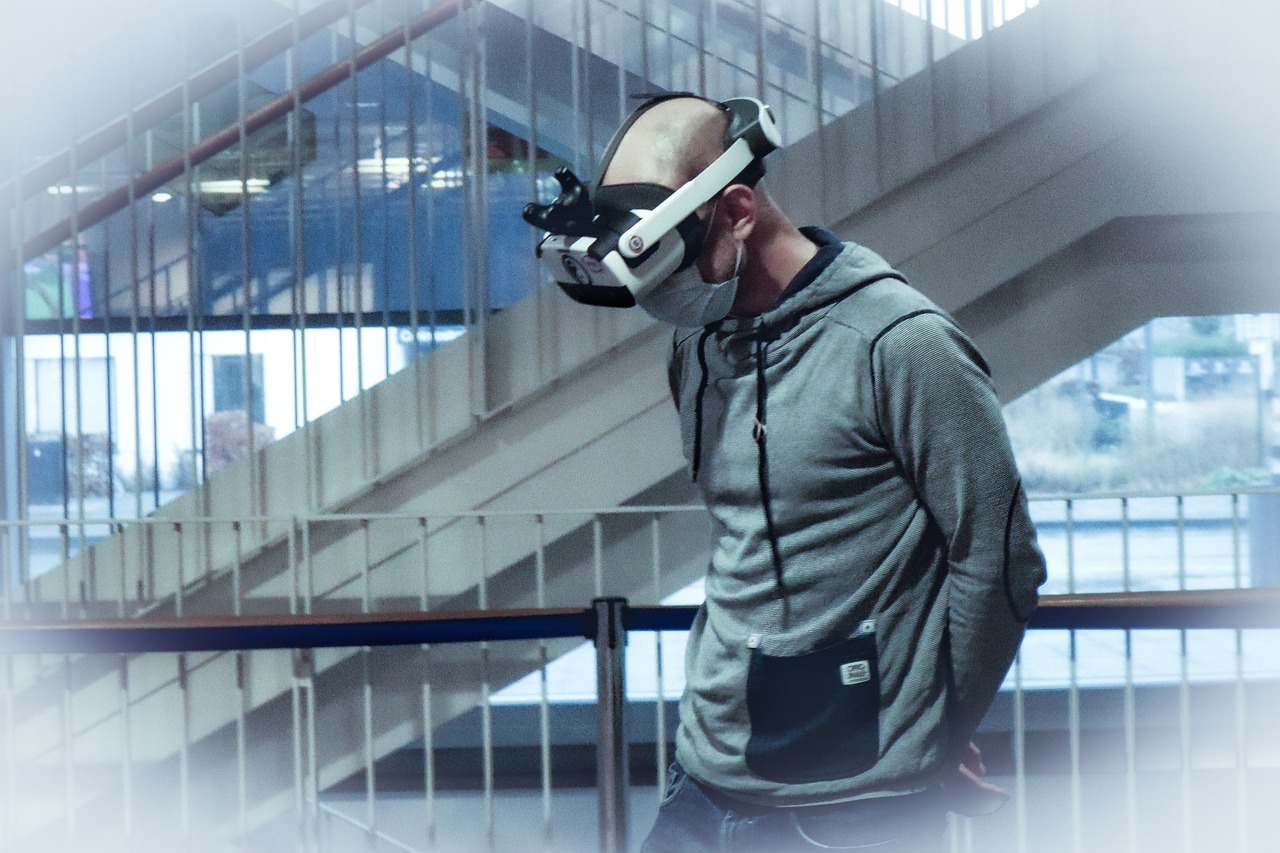How Virtual Reality Supports Training for Peacekeeping Missions
In today's world, where conflicts can erupt unexpectedly, the need for effective peacekeeping missions has never been greater. Virtual reality (VR) has emerged as a groundbreaking tool in training peacekeepers, offering an innovative approach that enhances their skills, situational awareness, and overall readiness for the challenges they may face in conflict zones. Imagine stepping into a virtual environment where you can experience the intensity of a crisis without any real-world consequences. This is the essence of VR training, a game-changer that is reshaping how peacekeepers prepare for their vital roles.
Virtual reality technology creates immersive environments that simulate real-life scenarios, making training more engaging and effective. Unlike traditional methods, which often rely on theoretical knowledge, VR allows peacekeepers to engage in experiential learning. This means they can practice what they’ve learned in a safe yet realistic setting, significantly improving both retention and readiness. For instance, a trainee can find themselves in a bustling marketplace, encountering a sudden outbreak of violence. Instead of reading about it in a textbook, they can experience the chaos, make decisions, and see the consequences of their actions firsthand. This kind of immersive training is not just about learning; it’s about living the experience.
Realistic simulations are crucial in VR training as they provide peacekeepers with the opportunity to practice decision-making and crisis management in controlled environments. This method helps develop critical skills without the risks associated with live training exercises. For example, peacekeepers can engage in scenarios that involve negotiating with hostile parties or managing civilian evacuations. By navigating these complex situations in a virtual space, they can hone their skills and build confidence. The ability to repeatedly practice these scenarios allows them to respond effectively when real situations arise, potentially saving lives.
VR training scenarios can replicate high-pressure situations, allowing peacekeepers to refine their decision-making skills. Imagine being in a tense standoff, where every second counts. The decisions made in those moments can have far-reaching consequences. This preparation is crucial for effective responses in unpredictable and potentially dangerous environments. Peacekeepers learn to assess situations quickly, weigh their options, and make informed choices under pressure, which is invaluable when they are in the field.
Scenario-based learning in VR allows trainees to engage with diverse situations, fostering adaptability and quick thinking. This method prepares peacekeepers for various challenges they might face during missions. Whether it's dealing with natural disasters, civil unrest, or humanitarian crises, VR scenarios can be tailored to reflect the complexities of real-world situations. This flexibility ensures that trainees are not just prepared for one type of scenario but are equipped to handle a range of challenges.
One of the standout features of VR training platforms is the inclusion of feedback mechanisms that assess trainee performance. These systems offer insights into strengths and areas for improvement, which is essential for continuous development in peacekeeping skills. After each simulation, trainees receive detailed reports that highlight their decision-making processes, communication skills, and overall performance. This feedback loop is invaluable in helping peacekeepers refine their skills and prepare for the unpredictable nature of their duties.
Virtual reality training fosters collaboration among peacekeepers, enhancing teamwork and communication skills. Just like a well-oiled machine, effective peacekeeping operations rely on cohesive teamwork. VR provides a collective training experience that helps build trust and improve coordination among team members. Through shared virtual experiences, peacekeepers learn to communicate effectively, understand each other's strengths, and work together seamlessly, which is vital for success in the field.
Adopting virtual reality for peacekeeping training can significantly reduce costs associated with traditional training methods, such as travel and logistics. Imagine the savings when organizations can conduct high-quality training without the need for expensive travel and accommodation. By utilizing VR, resources can be allocated more efficiently, allowing for a more sustainable approach to training while maintaining high standards.
By utilizing VR, organizations can minimize the need for expensive travel and accommodation, allowing for more efficient allocation of resources while maintaining high-quality training standards. This not only saves money but also ensures that peacekeepers can train more frequently, leading to better preparedness.
VR training programs can be easily scaled and accessed by peacekeepers worldwide. This ensures that personnel from various regions receive uniform training, regardless of their location. Imagine a peacekeeper in a remote area being able to access the same training as someone in a major city. This level of accessibility is revolutionary and ensures that all peacekeepers are equipped with the same skills and knowledge, creating a more unified force.
As technology advances, the future of VR training for peacekeeping missions looks promising. Innovations such as AI integration, enhanced realism, and multi-user environments could further enhance training effectiveness and adaptability in diverse operational environments. The potential for VR to simulate not just physical scenarios but also emotional and psychological challenges is an exciting frontier. Peacekeepers of the future will be better prepared than ever to face the complexities of their missions.
- What is virtual reality training? Virtual reality training uses immersive technology to simulate real-life scenarios for educational purposes.
- How does VR training benefit peacekeepers? It enhances decision-making, improves team dynamics, and allows for realistic practice without real-world risks.
- Is VR training cost-effective? Yes, it reduces travel and logistics costs while providing high-quality training.
- Can VR training be accessed globally? Absolutely! VR training programs can be scaled and accessed by peacekeepers around the world.
- What does the future hold for VR training in peacekeeping? Advancements in technology may lead to even more effective training methods, including AI integration and enhanced realism.

Understanding Virtual Reality in Training
Virtual reality (VR) technology has revolutionized the way we approach training, especially in fields as critical as peacekeeping. Imagine stepping into a world where you can practice your skills in a lifelike environment, without the inherent risks of real-world scenarios. This is precisely what VR offers—an immersive experience that allows peacekeepers to engage in realistic simulations of the challenges they might face in conflict zones. By creating these virtual environments, trainees can experience a level of experiential learning that traditional training methods simply can't match.
One of the most significant advantages of VR in training is its ability to enhance retention and readiness. When trainees are placed in dynamic, interactive settings, they are more likely to remember the skills and strategies they learn. For instance, instead of merely reading about conflict resolution strategies in a textbook, a peacekeeper can navigate a virtual village where tensions are high, practicing negotiation tactics in real-time. This hands-on approach not only boosts confidence but also prepares them for the unpredictability of real-life situations.
Additionally, VR training can be tailored to reflect the specific environments and challenges that peacekeepers will face. Whether it's simulating a natural disaster response or navigating a politically charged atmosphere, VR can create scenarios that are both relevant and challenging. This customization is vital, as it ensures that peacekeepers are not just learning generic skills but are instead gaining insights into the unique dynamics of the areas they will serve in. The ability to practice in a safe yet realistic environment allows for a deeper understanding of the complexities involved in peacekeeping missions.
Moreover, the technology behind VR is continually evolving, making it more accessible and effective. As hardware and software improve, the quality of simulations becomes increasingly sophisticated. Trainees can expect to encounter high-fidelity graphics and responsive environments that mimic real-life physics and interactions. This level of realism is crucial for developing situational awareness—a key skill for peacekeepers who must assess and react to rapidly changing conditions on the ground.
In summary, the integration of virtual reality into peacekeeping training is not just a trend; it's a transformative approach that enhances learning outcomes. By providing immersive experiences, realistic simulations, and tailored scenarios, VR equips peacekeepers with the tools they need to succeed in their missions. As we move forward, the potential for VR in training will only continue to expand, paving the way for more effective peacekeeping efforts worldwide.

The Importance of Realistic Simulations
In the realm of peacekeeping, the stakes are incredibly high. When lives are on the line, every decision counts, and the ability to react swiftly and effectively can mean the difference between chaos and order. This is where realistic simulations in virtual reality (VR) training come into play. By immersing peacekeepers in lifelike scenarios, VR training provides a safe yet challenging environment where they can hone their skills and prepare for the unexpected.
Imagine being dropped into a conflict zone where tensions are running high. How would you respond? What choices would you make? With VR, peacekeepers can experience these scenarios without the real-world risks. They can practice everything from negotiating peace to managing hostile situations. This type of training allows them to make mistakes and learn from them, all while under the watchful eye of experienced instructors. It's akin to a flight simulator for pilots—allowing them to practice emergency landings without ever leaving the ground.
Moreover, realistic simulations enable peacekeepers to develop critical skills such as decision-making and crisis management. In these controlled environments, they can face high-pressure situations that mimic the unpredictability of real-life missions. This exposure is invaluable, as it helps them cultivate the ability to think on their feet and make sound judgments, even when the pressure is on. For example, a VR scenario might involve a hostage situation where peacekeepers must negotiate with armed individuals while ensuring the safety of civilians. Practicing such scenarios prepares them for the complexities they will face in the field.
Additionally, VR training isn't just about individual skills; it's also about team dynamics. In many peacekeeping missions, success hinges on effective communication and collaboration among team members. Realistic simulations allow peacekeepers to work together, fostering a sense of camaraderie and shared purpose. They can practice coordinating their actions, strategizing, and executing plans as a cohesive unit. This collaborative training experience is essential, as it mirrors the real-world operations where teamwork is critical.
To further illustrate the impact of realistic simulations, consider the following table that highlights key benefits of VR training:
| Benefit | Description |
|---|---|
| Safe Learning Environment | Peacekeepers can practice without the fear of real-world consequences. |
| Skill Development | Enhances decision-making and crisis management abilities. |
| Team Collaboration | Encourages effective communication and teamwork among peacekeepers. |
| Immediate Feedback | Allows for real-time assessment and improvement of performance. |
In conclusion, the importance of realistic simulations in VR training cannot be overstated. They provide peacekeepers with the tools they need to navigate complex and often dangerous environments. By immersing them in lifelike scenarios, VR training enhances their preparedness, ultimately leading to more effective peacekeeping missions. The ability to practice, fail, and succeed in a virtual space is a game-changer, ensuring that when the time comes to act, peacekeepers are ready to rise to the occasion.
- What is virtual reality training for peacekeepers?
It is an immersive training method that simulates real-life conflict scenarios to enhance decision-making and crisis management skills. - How does VR training improve teamwork?
VR training allows peacekeepers to collaborate in simulated environments, improving communication and coordination among team members. - What are the cost benefits of VR training?
It reduces travel and logistics costs associated with traditional training methods while providing a safe training environment. - Can VR training be accessed globally?
Yes, VR training programs can be scaled and accessed by peacekeepers worldwide, ensuring uniform training standards.

Enhancing Decision-Making Skills
In the realm of peacekeeping, the ability to make quick and effective decisions can mean the difference between success and failure. Virtual reality (VR) training offers peacekeepers an unparalleled opportunity to enhance their decision-making skills in a controlled yet realistic environment. Imagine stepping into a virtual world where you are faced with a crisis that demands immediate action; this is the essence of VR training. It immerses trainees in scenarios that closely mimic the high-pressure situations they might encounter in the field, allowing them to practice and refine their responses without the real-world consequences.
One of the most significant advantages of VR training is its ability to replicate complex scenarios that require rapid decision-making. For instance, trainees might find themselves in a virtual setting where they must assess a situation involving civilians in distress, armed conflict, or natural disasters. The beauty of this technology lies in its capacity to create multiple outcomes based on the decisions made by the trainee. This interactive learning experience not only improves their ability to think on their feet but also fosters a deeper understanding of the consequences of their choices.
Furthermore, VR training can simulate various environmental factors that influence decision-making, such as time pressure, communication barriers, and emotional stress. By navigating these challenges in a safe space, peacekeepers can develop a more nuanced perspective on how to manage their responses in real-life situations. The feedback mechanisms integrated into VR platforms play a crucial role in this process. After each scenario, trainees receive detailed assessments that highlight their strengths and pinpoint areas for improvement. This continuous feedback loop is essential for honing decision-making skills and ensuring that peacekeepers are always learning and evolving.
To illustrate the effectiveness of VR in enhancing decision-making, consider the following table that compares traditional training methods with VR training:
| Aspect | Traditional Training | VR Training |
|---|---|---|
| Realism | Limited scenarios, often controlled | Highly immersive, realistic environments |
| Risk | Inherent risks during live exercises | No physical risks; safe learning environment |
| Feedback | Post-exercise evaluations | Immediate feedback and assessment |
| Adaptability | Fixed scenarios | Dynamic scenarios that change based on trainee decisions |
In conclusion, enhancing decision-making skills through VR training not only prepares peacekeepers for the unpredictability of their missions but also instills a sense of confidence in their abilities. By practicing in a virtual environment that mirrors real-world challenges, they can approach their roles with a level of preparedness that is simply unmatched. As peacekeeping missions continue to evolve, so too must the training methods employed, making VR an essential tool in the arsenal of modern peacekeeping forces.
- What is virtual reality training?
Virtual reality training uses immersive technology to create realistic simulations for trainees, allowing them to practice skills in a controlled environment.
- How does VR enhance decision-making skills?
VR enhances decision-making by placing trainees in high-pressure scenarios where they must make quick decisions, providing immediate feedback on their performance.
- Is VR training safe?
Yes, VR training is safe as it eliminates the risks associated with live training exercises while still providing realistic experiences.
- Can VR training be scaled for different regions?
Absolutely! VR training programs can be easily scaled and accessed by peacekeepers worldwide, ensuring uniform training regardless of location.

Scenario-Based Learning
Scenario-based learning is a powerful approach that leverages the immersive capabilities of virtual reality (VR) to create realistic training experiences for peacekeepers. Imagine stepping into a virtual world where you can face various complex situations, from negotiating peace in a tense community meeting to managing a sudden outbreak of violence. This method not only enhances the learning experience but also prepares peacekeepers for the unpredictable nature of their missions.
In traditional training, peacekeepers might role-play scenarios or watch videos of past missions. However, with VR, they can actively participate in these scenarios, making decisions and witnessing the immediate consequences of their actions. This kind of experiential learning is akin to learning to ride a bike; you can read about it or watch someone else do it, but nothing compares to the hands-on experience of actually riding. The stakes feel real, and the lessons learned are more likely to stick.
Moreover, scenario-based learning in VR allows for a wide variety of situations to be simulated. For instance, trainees can experience:
- Negotiation tactics in a hostile environment
- Crisis management during natural disasters
- Interacting with local populations in culturally sensitive ways
This diversity in scenarios fosters adaptability and quick thinking. Peacekeepers must be ready to pivot and respond to changes in their environment, and VR training hones these skills effectively. The ability to repeatedly practice these scenarios also builds confidence, ensuring that when real-life situations arise, peacekeepers are not just prepared but are also able to act decisively.
Feedback mechanisms within VR platforms further enhance this learning process. After each scenario, trainees receive insights into their performance, highlighting strengths and pinpointing areas for improvement. This continuous feedback loop is critical for developing the nuanced skills needed in peacekeeping missions. Just like athletes analyze their game footage to improve performance, peacekeepers can review their VR training sessions to refine their strategies and enhance their overall effectiveness.
In conclusion, scenario-based learning through virtual reality is revolutionizing peacekeeper training. By immersing trainees in lifelike situations, they gain invaluable experience that traditional methods simply cannot replicate. As technology continues to evolve, the potential for even more sophisticated and varied scenarios will only enhance the training of those tasked with maintaining peace in volatile regions around the globe.
Q1: How does VR training differ from traditional training methods?
A1: VR training provides an immersive experience that allows peacekeepers to engage in realistic scenarios, making decisions in real-time. Unlike traditional methods, which may rely on passive learning, VR encourages active participation and immediate feedback.
Q2: Can VR training be customized for different missions?
A2: Yes! VR training programs can be tailored to simulate specific environments and situations that peacekeepers might encounter, making the training relevant and applicable to their unique missions.
Q3: Is VR training cost-effective?
A3: Absolutely! By reducing the need for travel and logistics associated with traditional training, VR can significantly lower costs while still providing high-quality training experiences.
Q4: How accessible is VR training for peacekeepers worldwide?
A4: VR training programs can be easily scaled and accessed globally, ensuring that peacekeepers from various regions receive uniform training regardless of their location.

Feedback and Assessment
In the realm of virtual reality (VR) training for peacekeeping missions, play a crucial role in shaping the effectiveness of the training experience. Unlike traditional training methods, VR platforms are equipped with sophisticated analytics tools that can track a trainee's performance in real time. This data-driven approach enables trainers to provide immediate and personalized feedback, which is essential for continuous improvement.
Imagine stepping into a VR scenario where you're faced with a complex situation, such as mediating a tense standoff between conflicting parties. As you navigate through the scenario, the system records your choices, responses, and even your emotional reactions. After completing the exercise, you receive a detailed report that highlights your strengths, such as effective communication or quick decision-making, as well as areas needing improvement, like conflict de-escalation techniques. This immediate feedback loop allows peacekeepers to reflect on their actions and learn from their experiences in a safe environment.
Moreover, the assessment tools integrated into VR training can facilitate peer reviews and collaborative evaluations. Trainees can engage in group debriefings where they discuss their experiences, share insights, and offer constructive criticism. This collaborative approach not only enhances learning but also fosters a sense of camaraderie among team members, which is vital for successful operations in the field.
To illustrate the impact of feedback and assessment in VR training, consider the following table that summarizes the key benefits:
| Benefit | Description |
|---|---|
| Real-Time Feedback | Immediate insights into performance, allowing for quick adjustments and learning. |
| Performance Tracking | Detailed analytics help identify patterns and areas for improvement over time. |
| Collaborative Learning | Encourages teamwork and communication through peer evaluations and discussions. |
| Safe Learning Environment | Allows peacekeepers to make mistakes and learn without real-world consequences. |
Ultimately, the combination of immersive scenarios and robust feedback mechanisms not only prepares peacekeepers for the unpredictable nature of their missions but also instills a culture of continuous learning and adaptability. This is crucial in a field where the stakes are high, and the margin for error is minimal. By leveraging the power of VR technology, peacekeepers can hone their skills and enhance their readiness for the challenges that lie ahead.
- What is virtual reality training? Virtual reality training uses immersive technology to simulate real-life scenarios for training purposes, particularly in high-stakes environments like peacekeeping.
- How does feedback work in VR training? Feedback in VR training is provided through real-time analytics that track performance, enabling immediate and personalized insights for improvement.
- Can VR training replace traditional training methods? While VR training enhances traditional methods, it is most effective when used in conjunction with them, providing a comprehensive training experience.
- Is VR training cost-effective? Yes, VR training can significantly reduce costs associated with travel and logistics, making it a more efficient option for training peacekeepers.

Improving Team Dynamics
In the realm of peacekeeping, team dynamics can significantly influence the success of missions. Virtual reality (VR) training serves as a powerful tool to enhance these dynamics by fostering collaboration and communication among peacekeepers. Imagine a scenario where a group of peacekeepers, who may never have met in person, can engage in immersive simulations that mimic real-world challenges. This shared experience not only builds rapport but also cultivates a sense of unity that is essential in high-stress environments.
Through VR, trainees can participate in complex scenarios where they must work together to solve problems, make tactical decisions, and respond to evolving situations. This type of scenario-based training is crucial because it allows individuals to understand their roles within a team context, leading to improved interpersonal relationships and trust among team members. The immersive nature of VR helps individuals to step into each other's shoes, promoting empathy and understanding, which are vital components of effective teamwork.
Moreover, VR training can simulate various cultural contexts and conflict situations, enabling peacekeepers to practice their communication skills in diverse settings. This exposure helps them to develop cultural sensitivity, which is essential when interacting with local populations. For instance, a VR scenario might involve negotiating a peace agreement in a region with distinct cultural norms. By navigating these complexities in a virtual environment, peacekeepers can enhance their adaptability and communication strategies.
Additionally, VR platforms often incorporate feedback mechanisms that allow participants to reflect on their performance during training exercises. This feedback can highlight how well individuals collaborated and communicated with their teammates, providing insights into their teamwork skills. Such assessments are invaluable, as they not only identify strengths but also pinpoint areas for improvement. Continuous feedback loops foster a culture of learning and growth, ensuring that peacekeepers are always enhancing their ability to work as cohesive units.
In conclusion, the integration of virtual reality into peacekeeping training is revolutionizing how teams operate. By improving team dynamics through immersive experiences, peacekeepers are better prepared to face the challenges of their missions. As they learn to collaborate effectively in a controlled environment, they build the necessary skills to execute their duties with confidence and efficiency in the field.
- What is virtual reality training for peacekeepers?
Virtual reality training involves using immersive technology to simulate real-world scenarios that peacekeepers may encounter, allowing them to practice and refine their skills in a safe environment. - How does VR improve team dynamics?
VR enhances team dynamics by providing shared experiences that foster collaboration, communication, and trust among peacekeepers, which are essential for effective teamwork in high-stress situations. - Can VR training be scaled for global peacekeeping missions?
Yes, VR training programs can be easily scaled and accessed by peacekeepers worldwide, ensuring uniform training across diverse regions and contexts. - What are the cost benefits of using VR for peacekeeping training?
Utilizing VR can significantly reduce costs associated with travel and logistics while providing a controlled and safe learning environment for peacekeepers.

Cost-Effectiveness of VR Training
In today's fast-paced world, organizations are constantly looking for ways to maximize their resources while ensuring effective training for their personnel. This is where virtual reality (VR) training steps in, offering a revolutionary approach to peacekeeping missions. One of the standout advantages of VR training is its cost-effectiveness. Traditional training methods often come with hefty price tags, including travel expenses, accommodation, and logistics. However, by transitioning to VR, peacekeeping organizations can significantly cut these costs while still providing high-quality training experiences.
Imagine this: instead of sending peacekeepers across the globe for live training exercises, they can engage in realistic simulations from the comfort of their own locations. This not only reduces travel and logistics costs but also allows for a more efficient allocation of resources. Organizations can invest the funds saved into other critical areas, such as improving equipment or enhancing support systems for peacekeepers. The table below illustrates the potential savings when adopting VR training:
| Expense Type | Traditional Training Cost | VR Training Cost | Potential Savings |
|---|---|---|---|
| Travel Expenses | $10,000 | $1,000 | $9,000 |
| Accommodation | $5,000 | $500 | $4,500 |
| Logistics | $8,000 | $500 | $7,500 |
| Total | $23,000 | $2,000 | $21,000 |
As shown, the potential savings can be quite substantial, making a compelling case for the adoption of VR training. Furthermore, the scalability and accessibility of VR training programs are game-changers. They can be easily rolled out to peacekeepers worldwide, ensuring that personnel from different regions receive uniform training regardless of their location. This not only enhances the quality of training but also fosters a sense of global unity among peacekeepers.
Moreover, the ability to conduct training sessions frequently without the constraints of time and travel means that peacekeepers can undergo continuous training and skill enhancement. This is crucial in a field where adaptability and quick thinking can mean the difference between success and failure in a mission. In essence, VR training is not just a cost-saving measure; it’s a strategic investment in the future of peacekeeping operations.
- How does VR training improve peacekeeping skills?
VR training provides immersive simulations that allow peacekeepers to practice decision-making and crisis management in a risk-free environment. - Is VR training more effective than traditional methods?
Yes, VR training can enhance retention and readiness by providing realistic scenarios that traditional methods may not replicate. - Can VR training be accessed globally?
Absolutely! VR training programs can be scaled and accessed by peacekeepers worldwide, ensuring uniform training.

Reducing Travel and Logistics Costs
One of the most significant advantages of integrating virtual reality (VR) into peacekeeping training is the substantial reduction in travel and logistics costs. Traditional training methods often require peacekeepers to travel to specific locations for hands-on exercises, which can be both time-consuming and expensive. With VR, this challenge is tackled head-on, allowing trainees to immerse themselves in realistic environments without the need to leave their home base.
Imagine the expenses involved in flying peacekeepers across the globe, arranging accommodations, and coordinating schedules for training exercises. These costs can quickly add up, diverting funds away from other critical areas such as equipment and personnel support. By utilizing VR technology, organizations can eliminate most of these expenses. Trainees can engage in high-quality, immersive simulations right from their own facilities, which not only saves money but also maximizes training time.
Furthermore, VR training offers the flexibility to conduct multiple training sessions simultaneously. This scalability means that peacekeeping forces can train more personnel at once, enhancing their operational readiness without incurring additional costs associated with logistics. For example, a single VR training program can accommodate dozens of peacekeepers from various regions, all participating in the same scenario without the need for travel.
To illustrate the cost savings, consider the following comparison between traditional training and VR training:
| Training Method | Estimated Cost | Time Required |
|---|---|---|
| Traditional Training | $50,000 | 2 weeks |
| Virtual Reality Training | $15,000 | 1 week |
This table highlights how VR training not only reduces costs significantly but also shortens the time required for training. This efficiency allows peacekeeping organizations to allocate their resources more effectively, ensuring that funds are directed toward enhancing operational capabilities rather than being consumed by logistical challenges.
In conclusion, the shift to virtual reality training for peacekeepers is not only a technological advancement but also a strategic financial decision. By minimizing travel and logistics costs, organizations can invest more in the development of their personnel and the success of their missions. As we continue to explore the potential of VR in peacekeeping, it becomes clear that this innovative approach is paving the way for a more efficient and effective training paradigm.
- What is virtual reality training? - Virtual reality training uses immersive technology to simulate real-world scenarios for trainees, allowing them to practice skills in a safe environment.
- How does VR training reduce costs? - By eliminating the need for travel and logistics associated with traditional training methods, VR training significantly lowers expenses.
- Can VR training accommodate large groups? - Yes, VR training can be scaled to include multiple trainees simultaneously, enhancing training efficiency.
- Is VR training effective for peacekeepers? - Absolutely! VR training has been shown to improve decision-making, teamwork, and overall readiness for real-world missions.

Scalability and Accessibility
One of the most exciting aspects of virtual reality (VR) training for peacekeeping missions is its incredible scalability and accessibility. Imagine a world where peacekeepers from all corners of the globe can access the same high-quality training programs, regardless of their geographical location. This is not just a dream; it’s becoming a reality with VR technology. The ability to deliver uniform training experiences is crucial, especially in a field where consistency and preparedness can make all the difference in high-stakes situations.
With VR, organizations can deploy training modules that can be easily updated and distributed to peacekeepers stationed in various regions. This means that rather than having to gather all personnel in one location for training sessions—which can be both logistically challenging and costly—peacekeepers can participate in training from their own bases. This remote accessibility allows for a more flexible training schedule, accommodating the different time zones and operational commitments of peacekeeping forces.
Furthermore, the scalability of VR training means that it can be adapted to suit different numbers of trainees. Whether training a small unit or an entire battalion, the VR system can adjust to meet the demand without compromising the quality of the training experience. This is particularly beneficial in situations where rapid deployment is necessary, as peacekeepers can quickly get up to speed without the need for extensive resources.
To illustrate the impact of scalability and accessibility in VR training, consider the following table that highlights key advantages:
| Feature | Benefits |
|---|---|
| Remote Training | Peacekeepers can train from their locations, reducing travel costs and time. |
| Uniform Training | All personnel receive the same training, ensuring consistency in skills and knowledge. |
| Flexible Scheduling | Training can be scheduled around operational commitments, enhancing participation. |
| Adaptability | Training modules can be easily updated to reflect new scenarios or techniques. |
This adaptability is crucial in the ever-evolving landscape of peacekeeping missions, where new challenges arise frequently. As peacekeepers engage in diverse operational environments, having access to a scalable and accessible training solution ensures that they are always prepared, no matter what situation they face. In essence, VR training not only democratizes access to vital skills but also fosters a more cohesive and competent global peacekeeping force.
- What is virtual reality training for peacekeeping?
Virtual reality training for peacekeeping involves immersive simulations that prepare peacekeepers for real-world challenges in conflict zones, enhancing their skills and situational awareness.
- How does VR training improve decision-making skills?
VR training replicates high-pressure scenarios, allowing peacekeepers to practice decision-making in a safe environment, which is crucial for effective responses in unpredictable situations.
- Is VR training cost-effective?
Yes, VR training can significantly reduce costs associated with traditional training methods, such as travel and logistics, while providing a high-quality learning experience.
- Can VR training be accessed remotely?
Absolutely! One of the key benefits of VR training is its accessibility, allowing peacekeepers to train from their locations, regardless of where they are stationed.

Future Trends in VR Training for Peacekeeping
As we look towards the horizon, the future of virtual reality (VR) training for peacekeeping missions is brimming with exciting possibilities. The rapid evolution of technology is paving the way for more sophisticated and effective training solutions. Imagine a world where peacekeepers can train in hyper-realistic environments that mimic the complexities of conflict zones. This is not just a dream; it's becoming a reality!
One of the most promising trends is the integration of artificial intelligence (AI) into VR training modules. AI can analyze a trainee's performance in real-time, offering personalized feedback tailored to individual strengths and weaknesses. This means that each peacekeeper can receive a customized training experience, honing their skills in areas where they need the most improvement. It's like having a personal coach who is always there, guiding you through the challenges of training.
Moreover, the future of VR training is likely to embrace multi-user environments. This allows peacekeepers from different parts of the world to train together, fostering a sense of global unity and teamwork. Picture this: peacekeepers from various countries, all in the same virtual space, working together to resolve a simulated crisis. This not only enhances their collaborative skills but also builds camaraderie among international teams, which is crucial for real-world missions.
Another exciting development is the potential for augmented reality (AR) integration with VR. Imagine being able to overlay critical information onto the real world while training in VR. For instance, during a simulated mission, peacekeepers could see real-time data about the environment, potential threats, and even communication from their team members. This immersive experience would significantly enhance situational awareness, making them better prepared for the unpredictability of real-life scenarios.
Furthermore, as VR technology becomes more affordable, we can expect a wider adoption across various peacekeeping organizations. This democratization of training resources means that even smaller organizations or those in developing nations can access high-quality training. The goal is to ensure that every peacekeeper, regardless of their background or location, receives the same level of training and preparation.
In summary, the future of VR training for peacekeeping is not just about enhancing existing methods; it's about transforming the way peacekeepers are prepared for their vital roles. With advancements in AI, multi-user environments, AR integration, and broader accessibility, we are on the brink of a new era in peacekeeping training. The possibilities are endless, and the impact on global peacekeeping efforts could be profound.
- What is virtual reality training for peacekeeping?
Virtual reality training for peacekeeping involves using immersive VR technology to simulate real-world scenarios that peacekeepers might face, allowing them to practice and refine their skills in a safe environment.
- How does VR training improve decision-making skills?
VR training replicates high-pressure situations where peacekeepers must make quick decisions, helping them to develop critical thinking and crisis management skills essential for real-life operations.
- Is VR training cost-effective?
Yes, VR training can significantly reduce costs associated with traditional training methods, such as travel and logistics, while providing a safe and controlled learning environment.
- What are the future trends in VR training for peacekeeping?
The future trends include the integration of AI for personalized training, multi-user environments for global collaboration, AR for enhanced situational awareness, and broader accessibility across various organizations.
Frequently Asked Questions
- What is virtual reality (VR) training for peacekeepers?
Virtual reality training for peacekeepers involves using immersive technology to simulate real-life scenarios that they might encounter in conflict zones. This method allows trainees to engage in experiential learning, which enhances their skills, situational awareness, and readiness for actual missions.
- How does VR training improve decision-making skills?
VR training creates high-pressure scenarios where peacekeepers can practice making quick and effective decisions. By replicating stressful environments, trainees can refine their decision-making abilities, which is crucial for responding to unpredictable situations in the field.
- What are the benefits of scenario-based learning in VR?
Scenario-based learning in VR allows peacekeepers to experience a variety of situations, fostering adaptability and quick thinking. This approach prepares them for the diverse challenges they might face during missions, ensuring they are well-equipped to handle unexpected events.
- How does VR training enhance teamwork among peacekeepers?
Virtual reality training encourages collaboration and communication among peacekeepers. By participating in collective training experiences, they develop stronger teamwork skills, which are essential for cohesive operations in the field, especially in high-stakes environments.
- Is VR training cost-effective compared to traditional methods?
Yes! Utilizing VR for peacekeeping training can significantly reduce costs associated with travel and logistics. It allows organizations to allocate resources more efficiently while providing a safe and controlled learning environment without the expenses of traditional training methods.
- Can VR training be scaled and accessed globally?
Absolutely! VR training programs are designed to be scalable and accessible, enabling peacekeepers from various regions to receive consistent training. This ensures uniformity in training standards, regardless of geographical location, making it a valuable tool for international peacekeeping efforts.
- What does the future hold for VR training in peacekeeping?
The future of VR training for peacekeeping looks promising, with ongoing technological advancements that could enhance training effectiveness. Innovations may lead to even more realistic simulations and improved adaptability for peacekeepers in diverse operational environments.



















